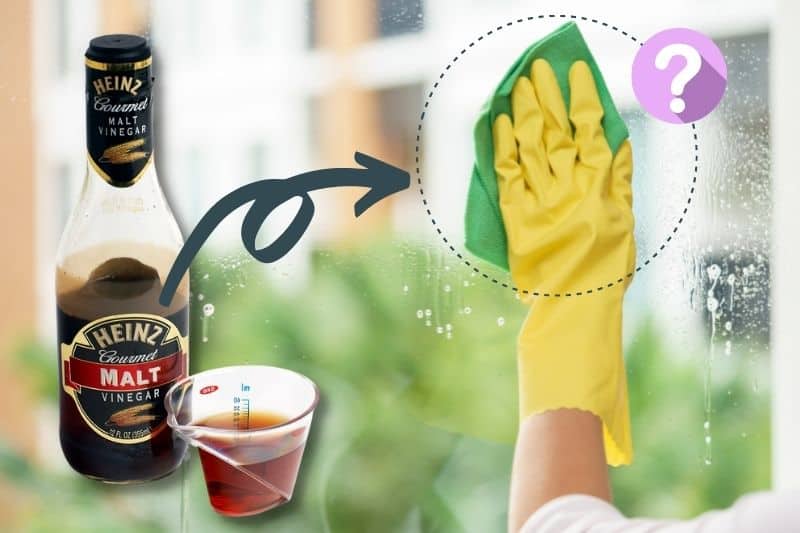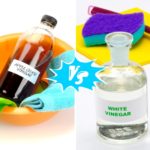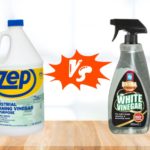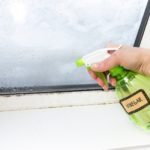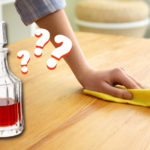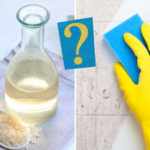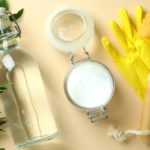It is a well-known fact that vinegar is a great cleaning product. It is a great way to clean mugs, get rid of bugs, give a boost to a washing machine cycle, get rid of nasty smells, and more.
One question you might find yourself asking, is does it matter what vinegar you use?
In short, yes.
Malt Vinegar vs White Vinegar
Malt vinegar is one of the most common types of vinegar around. It is the type of vinegar most people will put on their fish and chips and is something that many households will have in a kitchen cupboard.
Many people may be tempted to attempt to use malt (or brown) vinegar for cleaning, however that isn’t recommended.
Malt vinegar has quite a strong smell, and this can really linger around a home, leaving rooms smelling like your local fish and chips takeaway. The dark colour means that it can also leave stains behind on some surfaces, especially light-coloured ones, after use.
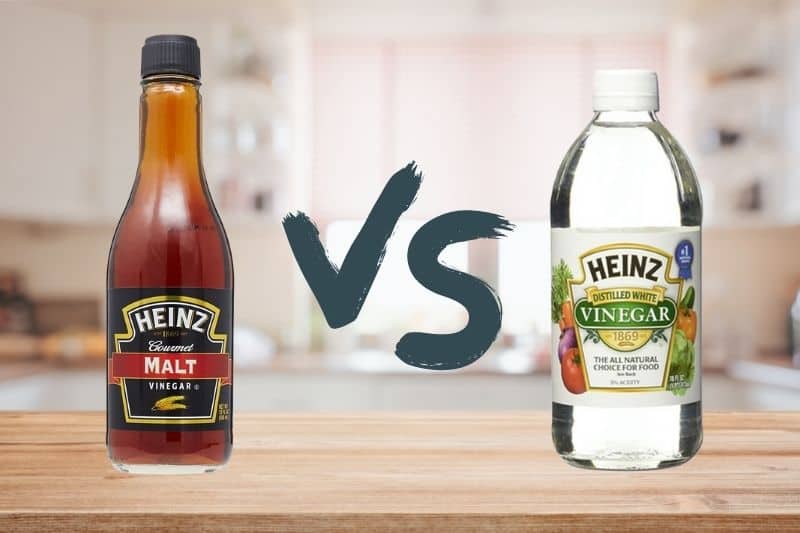
Instead of malt vinegar, opt for white vinegar. This is a purified vinegar, that does not smell as strong, and as it is clear, you are avoiding the risk of staining your surfaces too. Overall, white vinegar is just a much more suitable cleaning choice.
Benefits of Cleaning With White Vinegar
The market today is awash with a wide variety of cleaning chemicals. Compared to these, white vinegar is non-toxic, meaning it is good for both you and the planet.
It can also be a much cheaper cleaning solution. White vinegar can be used for a range of different cleaning tasks, so there is no need to purchase multiple chemicals for each different household chore.
Vinegar’s natural acidity means that it will cut through even the nastiest grime and limescale easily, making it an effective choice too.
Cleaning With White Vinegar
There is a wide range of cleaning tasks and other chores that can be easily tackled with white vinegar, water, and a little elbow grease. These include dealing with stains, odours, and bugs, to name just a few.
There is a range of chores that you shouldn’t tackle with vinegar as it could cause irreversible damage. These include irons, natural stone, wooden furniture, hardwood flooring and electronic devices.
It is also recommended that you do not tackle a cleaning task that involves egg. Vinegar caused egg to coagulate, which can make the cleaning process so much worse.
1. Cleaning mugs
Mugs, especially light-coloured ones, can quickly end up stained thanks to coffee or tea if they aren’t washed soon after use. These stains can be easily removed by scrubbing them with a mix of salt and white vinegar.
2. Getting rid of ants and insects
If there are areas in your home or garden where you are always seeing ants, spiders, and some other bugs, you can get rid of them with a simple solution of white vinegar and water.
Mix equal parts water and white vinegar in a spray bottle, and spray around the areas you find the insects. The bugs will hate the vinegar, and quickly move on from the area.
3. Laundry booster
When it comes to helping with laundry, the possibilities are endless. Adding a little white vinegar in with laundry can help remove stains, such as yellow armpits and dirty collars, leave towels soft and fluffy, and prevent fading in colours too.
4. Removing nasty odours
Getting rid of odours can be tricky, as a lot of methods can just cover up the problem rather than truly eliminating it. To remove nasty smells, first, fill a couple of small containers with white vinegar.
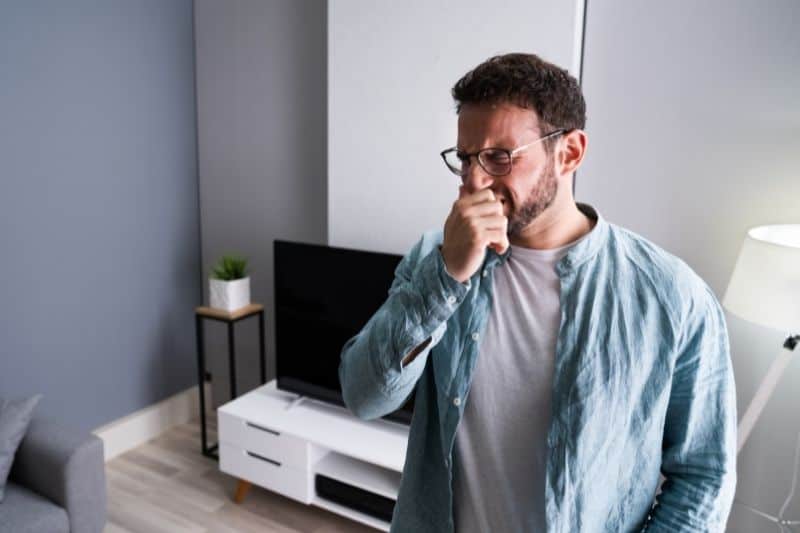
Spread them around the affected room and leave them to sit for a day. Repeat the process with fresh vinegar until the smell has gone.
5. DIY air fresheners
Some commercially available air fresheners can cause migraines and problems for asthma sufferers.
You can make your own air freshener using your trusty white vinegar. Simply mix a teaspoon of white vinegar and around six drops of your favourite essential oil in a spray bottle of distilled water.
6. Unclogging a showerhead
Over time, showerheads can become clogged up with limescale, especially if you live in a hard water area.
This can cause a lapse in performance and put unnecessary pressure on your plumbing. Rather than running out to grab a new one, you can tackle the problem with white vinegar.
First, remove the showerhead. It should unscrew from the fixing on the hose easily. You’ll need a container that is big enough to fully submerge your showerhead.
Fill the container with enough white vinegar to achieve this and soak the showerhead for anywhere between 30 minutes and overnight, depending on how bad the limescale is.
If the showerhead is not easily removed, fill a plastic bag with vinegar and secure it over the showerhead with an elastic band.
7. Cleaning windows
Rather than using expensive window cleaning products, you can achieve a streak-free shine with a trusty bottle of white vinegar.
Fill a spray bottle with equal parts water and white vinegar, and spray onto the window surfaces. Wipe down to finish with a paper towel or old newspaper.
You can use this same technique to clean dirty blinds. Mix together equal parts white vinegar and hot tap water, and simply wipe the grime away.
8. Cleaning chopping boards
Chopping boards can gather all kinds of nasty bacteria over time, regardless of how well you wash them.
This is especially notable in chopping boards with textured surfaces or those where the surface can get damaged each time you slice food.
Wooden chopping boards are notoriously difficult to clean. However, they can be easily cleaned and disinfected by simply wiping them down with full-strength white vinegar.
9. A gentle weed killer
Commercial weed killers tend to be nasty, potent chemicals. Rather than purchasing one of these, opt for a more natural, gentle method instead.
Fill a spray bottle with undiluted white vinegar, and spray unwanted weeds regularly when they spring up. Simple!
10. Cleaning old paintbrushes
If you’ve let the paint dry into the bristles of a brush, it doesn’t need to be game over.
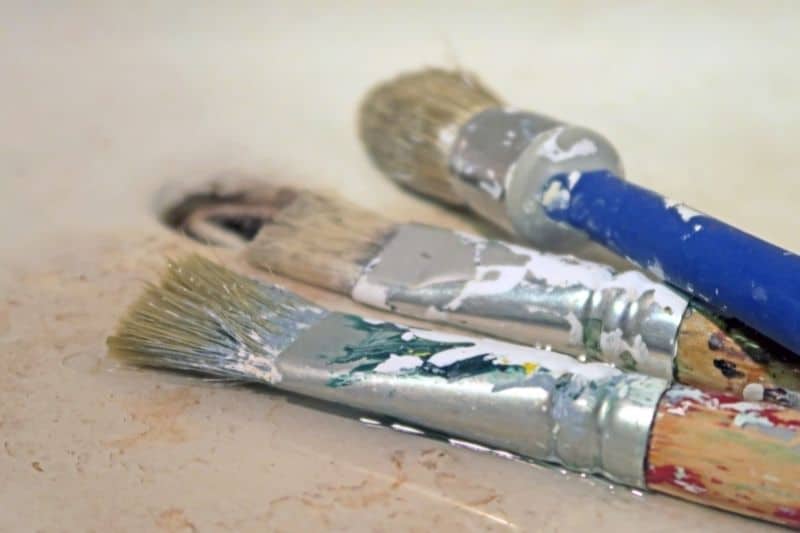
Instead of trying to clean the paint out using a harsh chemical like white spirit, soak the paintbrush in undiluted white vinegar until the paint disappears, and then wash thoroughly in hot, soapy water to remove all traces of vinegar residue.
11. Unsticking stickers
There’s nothing worse than ending up with bits of stickers left behind on new dishware, furniture, or other surfaces.
Instead of scrubbing at the sticker, use white vinegar on the corners and sides of the sticker. This will dissolve the glue, making it easier to lift the sticker away.

Lover of coffee, painting, and all things cute and fluffy. I’m always on the lookout for easier, more gentle ways to tackle awful household chores.
